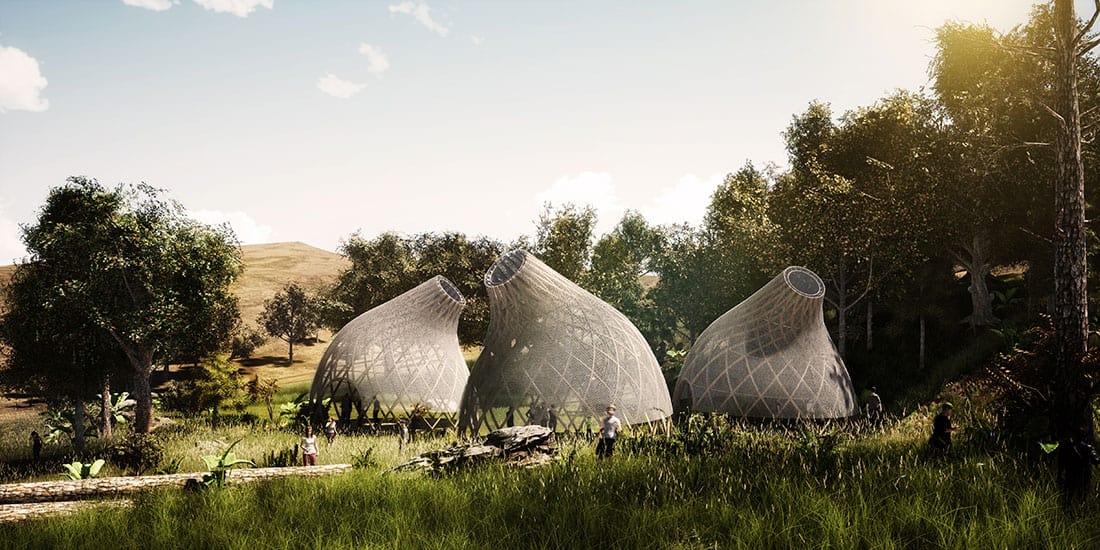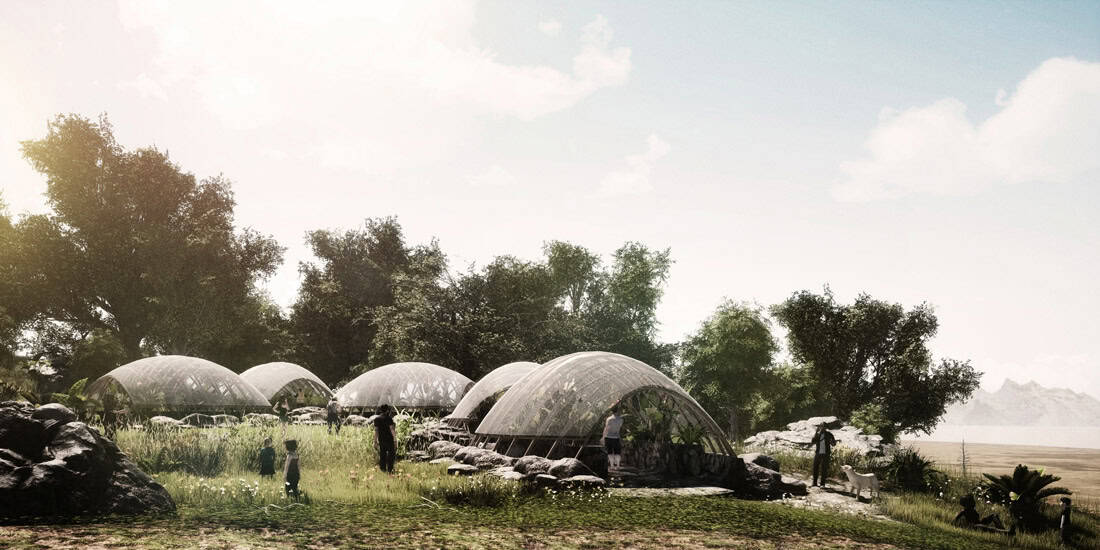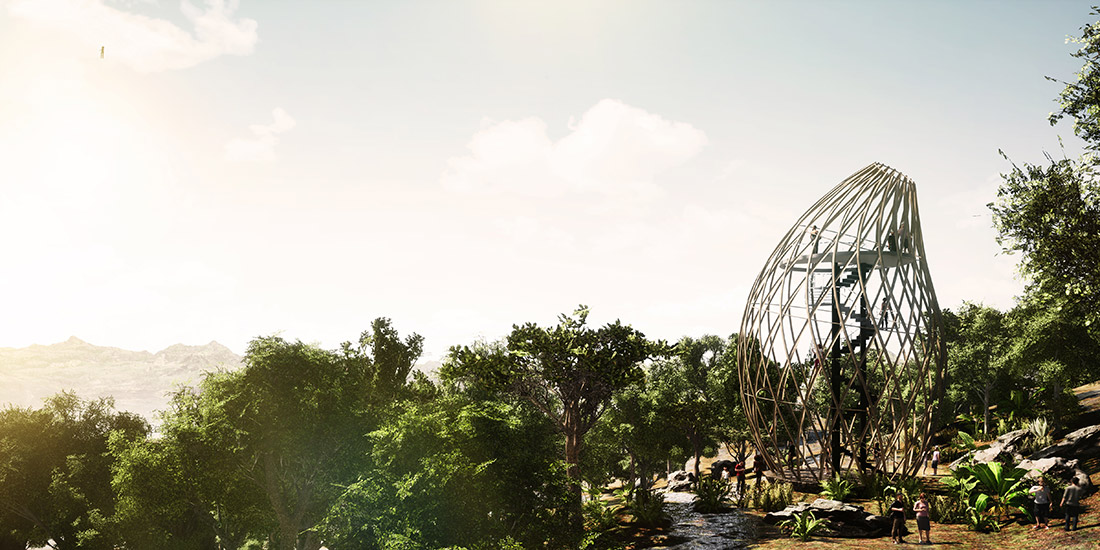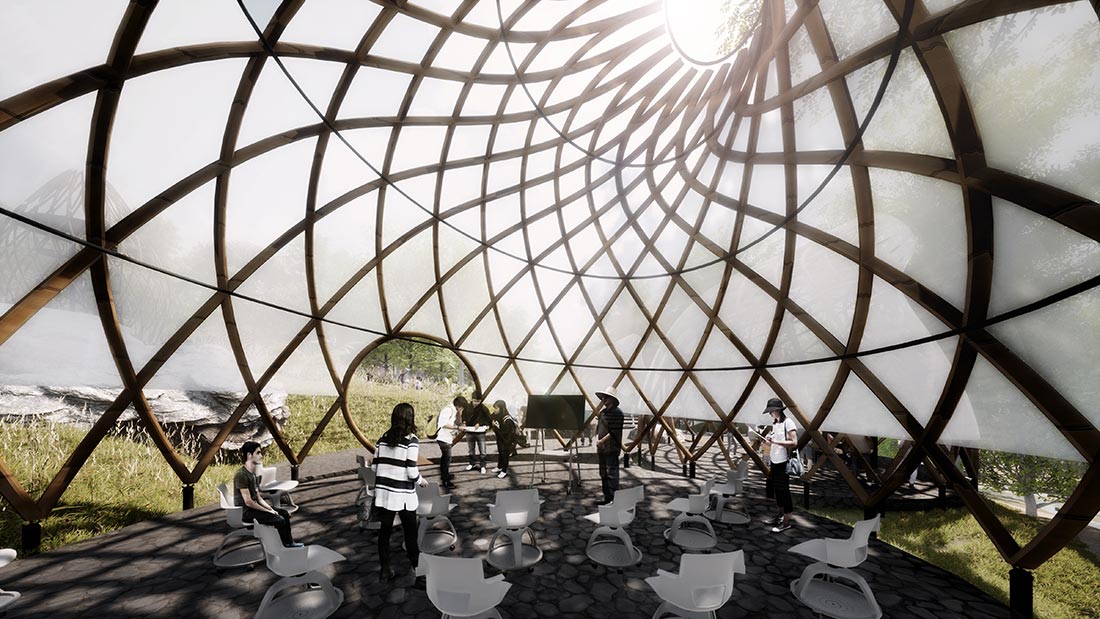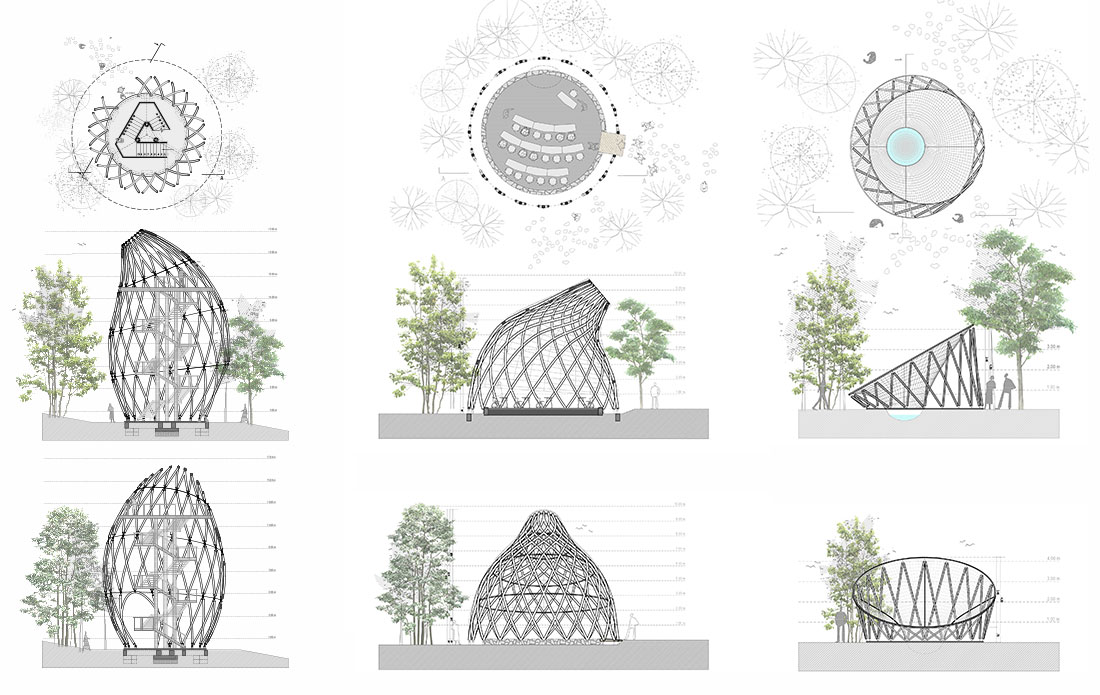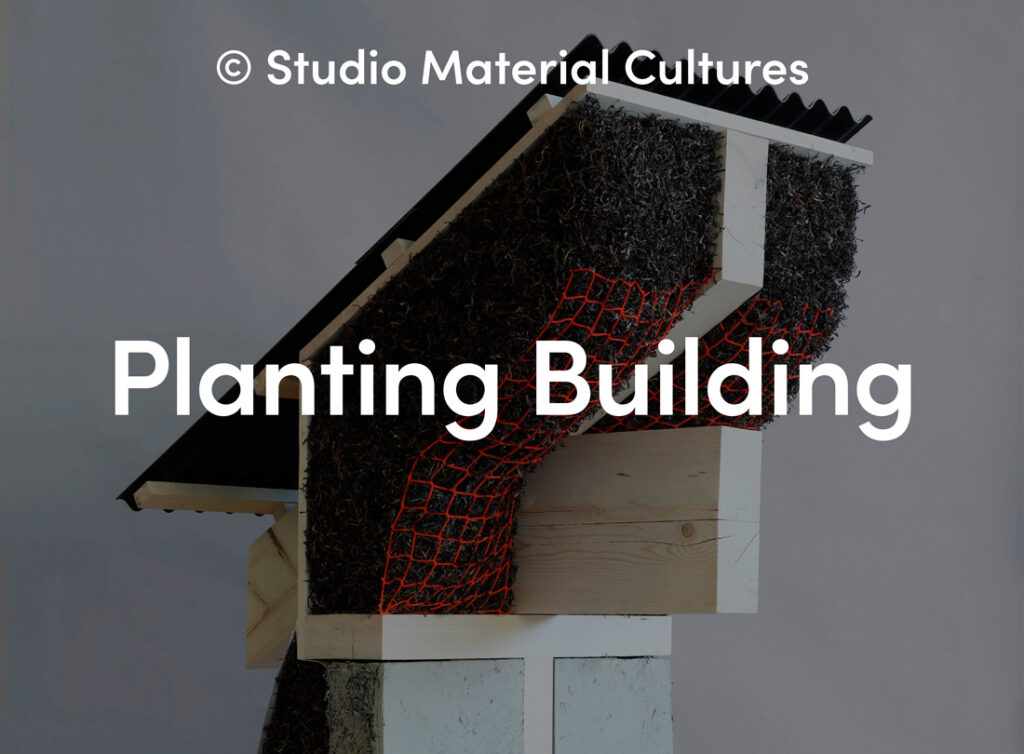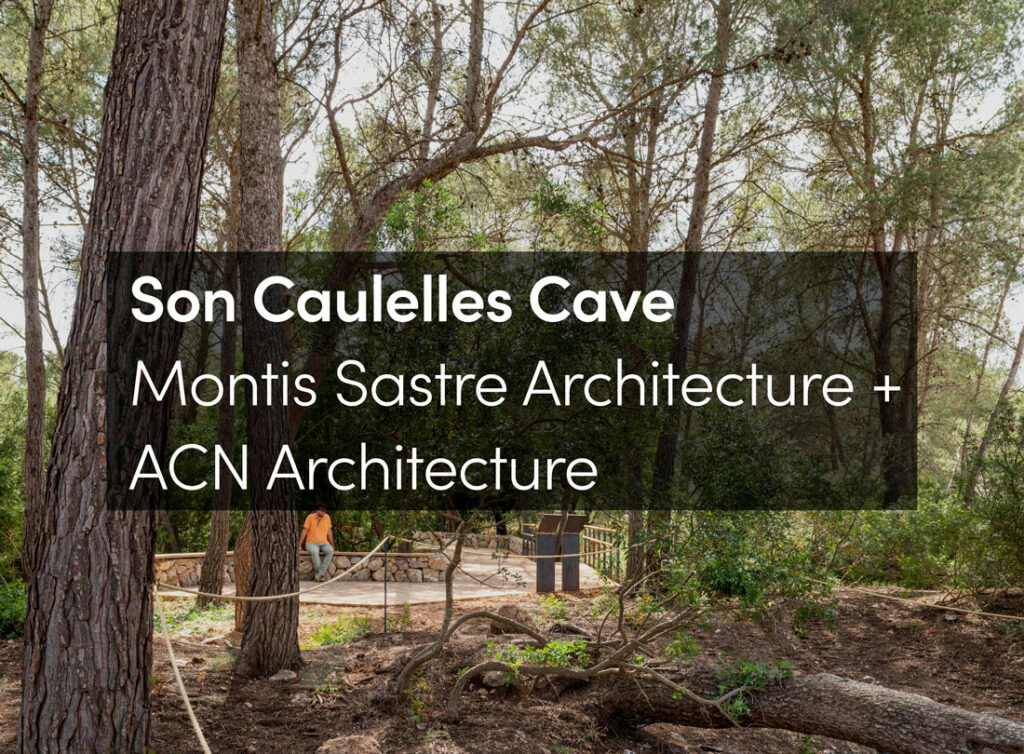Antioquia is a department in northwestern Colombia, which lies mostly in the Andes mountain range and extends into the Caribbean Sea. Medellín is its capital.
The Parque Biodinámico [Biodynamic Park], located there, is a project designed to accompany the activities of the Quebradona copper mine and to counteract the environmental impact generated by the mining activities. The first stage will be construction, between the first and fourth year of the project. The second stage will correspond to the mine’s operating time, which will be from years 5 to 21. The third stage will be after the closing of mining operations, between years 22 and 38.
The main requirement made by the client is the care of the ecosystem throughout the mine’s operation cycle and even after its closure. The mine is projected to operate for 27 years, during which time the different stages of the construction of the park, understood as a living and developing organism, will be implemented. In its final stage, the objective is the complete reuse of the extraction area to reintegrate it into the landscape.
The park, the first element in this management plan, will be in a strategic area that does not interfere with the operation of the mine; it will be a protected area for flora and fauna and for the enjoyment of the local inhabitants. The site was chosen because it will protect most of the tropical dry forest located within the mine’s area of influence. Its pilot polygon consists of ten hectares of forest with integrated trails and various activity modules.
The area has a diverse geography with unique ecosystems and enormous water potential, as well as great cultural and patrimonial wealth associated with construction methods. Guadua, a native species, is consolidated in the area as a construction material and is the common denominator of the region’s traditional architecture. It is a woody bamboo that reaches 30 meters in height and 22 centimeters in diameter. It also has a high growth rate, almost 11 centimeters per day in the region, and it is said that it can reach its full height in only six months. These are positive characteristics, considering that one of the problems encountered in planting timber species for reforestation is the extremely long time it takes to obtain results.
The project is based on four main lines of action:
· The recovery and maintenance of the tropical dry forest by planting native species.
· The construction of educational units immersed in the landscape for educational and research activities related to the study of the tropical dry forest and the mining activity on the site.
· The use of renewable energy throughout the park’s operation.
· Hydro turbines will harness the pumped water to operate the mine. From the constant flow of water, a generator will produce power. Once the water movement has been harnessed, the water will be returned to the river in a better state than when it was initially collected, as the water will be purified and purified through filters and settling tanks. This system will provide an annual energy production of 73,000 kWh.
· The solar condensers consist of transparent spheres filled with water. These spheres function as large magnifying glasses that concentrate solar radiation into an intense beam of light, magnify the rays more than 10,000 times and direct them towards solar panels where the energy is captured. Its annual production will be 456 kWh.
For support infrastructure, the park will also have an access building (ticket offices, registration, souvenir store, administration, information point, vending machines), a pavilion for large-capacity events (572 people seated, 900 people standing), spaces for cultural promotion, and information modules on the mining project, as well as small service buildings: concessions, warehouses, security booths, toilets, among others.
A two-kilometer system of trails will link the park’s activities. The main trails, with a three-meter section, will be waterproof, with luminescent stone finishes and will meet reduced mobility standards. The secondary paths, with a permeable metal structure and two meters wide, will connect the primary paths with the park’s activities and living areas.
The comprehensive proposal seeks to add to the efforts to recognize the region’s traditions and promote economic activities with an important environmental focus. The Biodynamic Park seeks to strengthen local roots and provide nearby inhabitants with training in specific fields to boost the economy and education. But above all, it seeks to establish a new model of environmental management related to mining that guarantees the care of the natural ecosystems in the area of operation.
